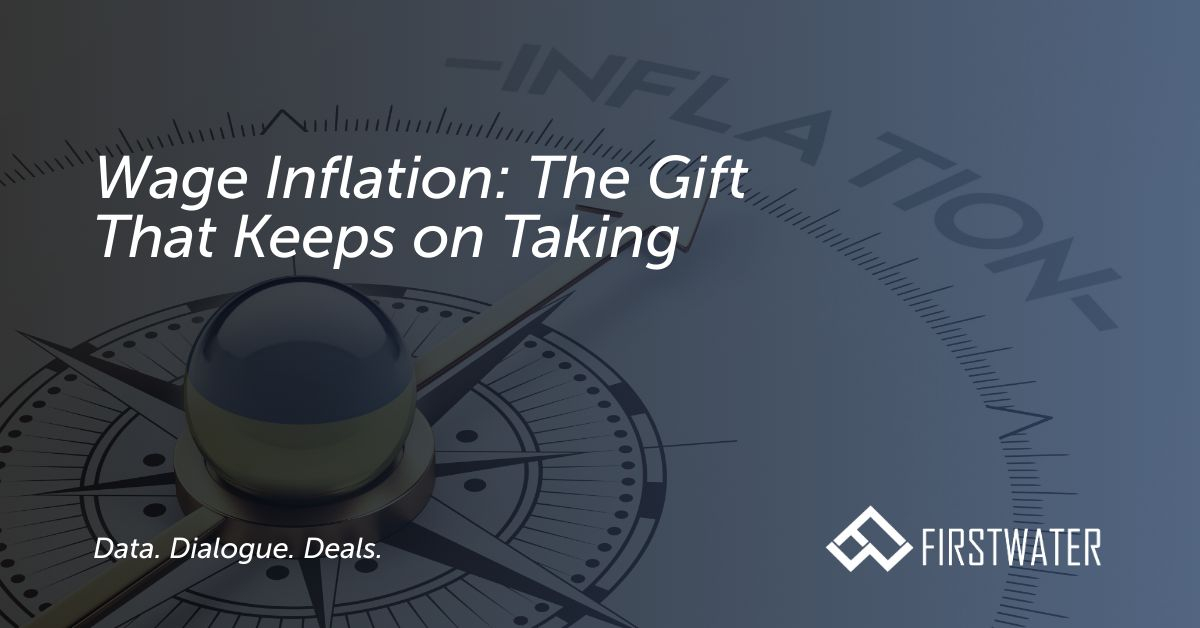Overall, inflation levels have subsided from peaks though still stay above long term “targets.” Regardless of their industry sector, or size, most companies find themselves pushing against tight labor markets and rising labor costs, struggling to balance the scales of profitability amidst mounting pressures on their balance sheets.
For labor-centric enterprises, particularly those in the B2B/B2C services sector, the impact of wage inflation cuts deep. Personnel expenses often represent the lion’s share of their cost structures. Yet, passing on these cost increases to customers presents a formidable challenge, as market dynamics and competitive pressures constrain pricing flexibility.
With higher costs of recruiting and retaining skilled talent, how are businesses countering the pressures on the P&L? Across our client base and conversations with countless CFOs at roundtable events, we’ve captured key insights and tactics on countermeasures. Let’s dive into it below:
Community Insights: Fighting Uncertainty with Good Ol’ Communication
Despite the challenges posed by wage inflation, one architecture design firm CFO shared with us the firm’s strategies in countering the pressures on the margin line. Most notably, he had upped his team’s engagement within and between sales and client account leaders, with a goal of getting better visibility into margins, utilization, and pipelines. Key steps include:
- Increasing Communication: Just because a system has a populated date in expected project completion or launch fields, this doesn’t mean they are locked in stone and don’t “vary in variability” across projects. The only way to improve interpretation of available data in this case is to talk about it!
- Revisiting Customer Pricing and Contract Structures: Recognizing the challenges in labor resourcing and pressures on wage inflation, the firm revisited its standard engagement agreements to incorporate flexibility and protections (such as minimum utilization rates in a given period).
- Improving Internal Labor Efficiency: Increased communication has knock-on effects, including more visibility on individual team member utilization, leading to more proactive resource shifting. Another way to safeguard margins in the face of rising labor costs is to use those existing costs more efficiently!
Increased communication and collaboration are the only levers available to improve non-systematized decision-making processes. While this comes as no surprise, finance teams must keep pushing to enhance information flow and flex those softer people skills to enable collaboration across organizations.
First Water Applications: Additional Strategies for Wage Inflation
In addition to comments above, here are additional ideas we have focused on and collaborated on inside our partner companies and community:
- Exploring Alternative Compensation and Resource Models: From performance-based incentives to flexible use of time (does 9-5 matter if you can get 40 per week?), alternative models can offer creative solutions for managing labor costs while retaining talent. Particularly for labor-centric organizations, finding solutions in the existing base, even with participation in margin upside, beats the true total cost of team churn and recruiting.
- Investing in Training and Development: Intentionality into employee training and upskilling improves productivity. This also communicates an investment into professional development, giving team members more of a sense that their advancement matters to those around them and supporting retention.
- Strengthening Relationships with Customers: Opening additional lines of communication with customers and vendors is a good relationship-building precursor to tougher pricing conversations. As CFO or other leader, if your first touch point with a customer is to focus on improving your margins, you may face an uphill battle. Relationships matter and they are easier to build from a friendlier dialogue!
On the topic of prioritizing relationships with customers, we helped one of our clients, a PE-backed digital transformation professional services firm, gain more insight into their project margins which in turn allowed for open communication and more transparency with their customers.
Building out their 13-week cash flow forecasting process, we started digging into invoicing and collections, and uncovered that the bridge from the time tracking system to the accounting system was completed in a notebook (spiral and all!), and only trued up in the systems monthly. We were able to solve for this through integrating multiple data sources together to forecast future invoicing. While integral to the cash forecasting process, there was an important ancillary benefit – opening up near real time visibility into project margins, allowing the finance team to engage with project leads for proactive escalation with clients. In periods of persistent wage inflation and margin pressures, even a couple weeks of difference in data availability can mean significant margin loss and hinder negotiating abilities with customers!
Takeaways
Wage inflation is an ongoing challenge, requiring adaptation and creativity. While it presents significant hurdles for business, particularly labor-centric enterprises, proactive strategies can mitigate its impact. For example, our professional services client tapped on us for help, and we enabled granular cash forecasting (with invoicing and collections at the project level) while transforming an inefficient internal process into a source of communication proactivity with positive margin management results.
Additionally, by adjusting pricing structures, improving internal efficiency, and exploring alternative compensation models, businesses can counter the pressures of wage inflation while improving collaboration and profitability. Moreover, investing in training and development, and building better relationship bridges to customers, shows you are invested in all stakeholders which positively feeds back into the margin management challenge.
————–
First Water Finance (FWF) is a finance solutions platform supporting finance leaders, business owners, and capital partners through FP&A, Corporate Finance, and Community. FWF has supported over 100 management teams and sponsors, concentrated in emerging and mid-market enterprises, professionalizing and accelerating the finance function in pursuit of growth, acquisition, and/or sale objectives.


